Trying to find inspiration to finish our tracks isn’t always easy and can sometimes lead to the loss of some really great ideas. We’ve all been here at some point. Our beat is stuck on a loop and we’re desperately trying to figure out what to do next. When you find yourself in this situation there are a number of different approaches you can take to reignite some of that creative spark and breathe life back into your beat. Although making music is usually a creative process, sometimes it can really help to get technical. Remember, if you don’t finish it, there’s the likelihood no one is going to hear it.
Luckily, at pointblank, many of us have been making music for a very long time and have picked up a number of useful tips and tricks to tackle that frustrating writer’s block. From structural arrangement techniques to inspiring creativity within yourself, we’ve got you covered when it comes to getting out of the loop. Check out our quick-fire cheat sheet below and follow on for a more in-depth look at 7 key tips for finishing off your tracks and finding inspiration. If you’re reading this and need some help starting your tracks, we offer courses in Music Production & Sound Engineering at a number of different levels which can help get you get things moving.
1. Have an idea in mind
2. Map out the full structure and framework of the track
3. Make notes & lists
4. Use a reference track for mixing, mastering & composition
5. Know your limits: don’t overcomplicate things
6. Test it out on different systems & people
7. Put your track in a short playlist and see how it fits against other releases
8. Get experimental with your sounds
9. Take a break!
1. Have An Idea In Mind
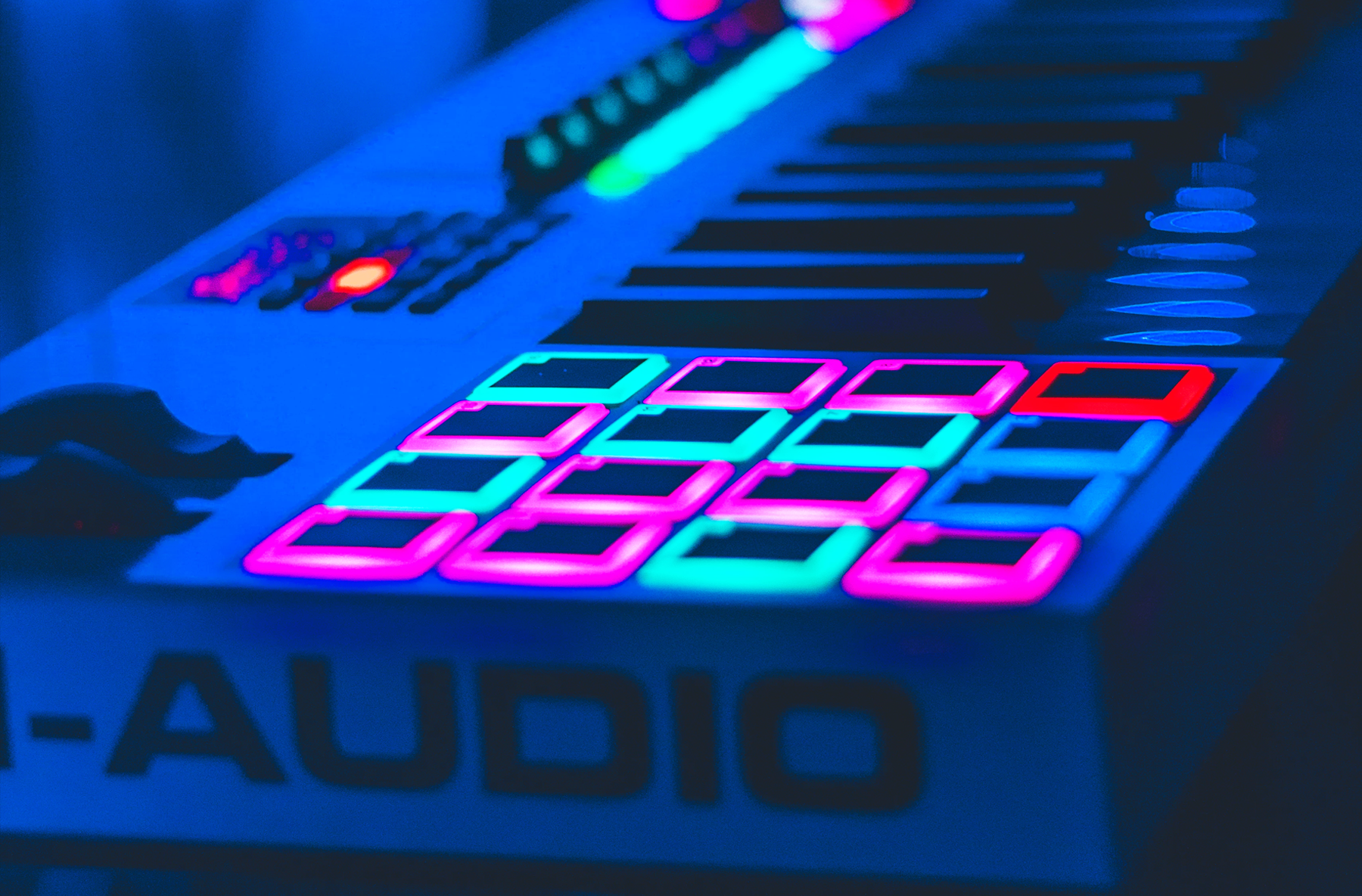
It may sound obvious but having an idea of what you’re aiming for is an important aspect of most production. If you’re trying to make a trap banger, a euphoric future bass anthem or whatever, keep the eyes on the prize and it will help you keep focused on the finish line. Is this track for the club or a singer or rapper? Is it for a soundtrack or supposed to be an ambient hypnotising journey? Stick to your guns and you won’t lose your way.
2. Map It Out
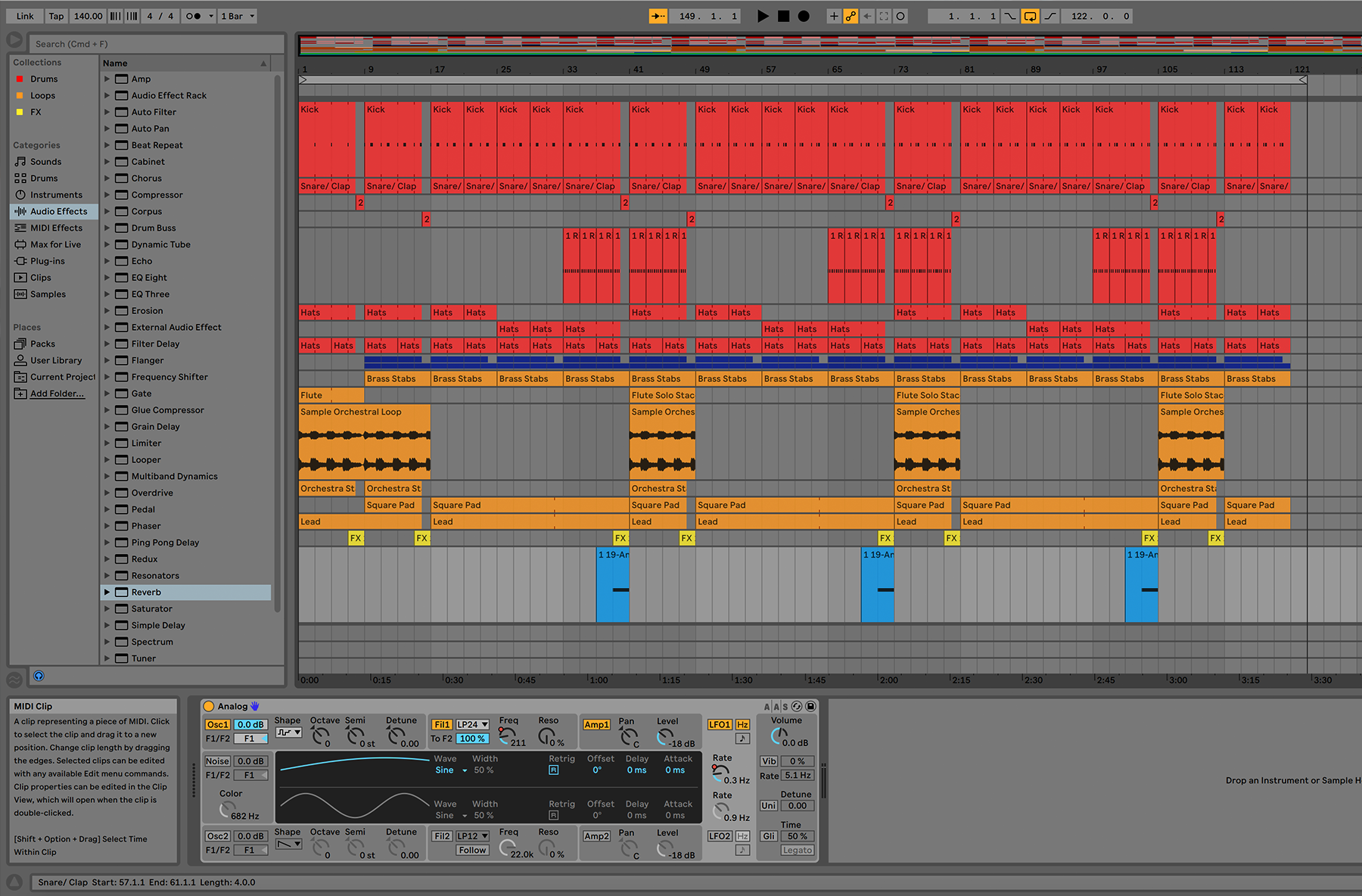
Everyone has different ways of working and it’s sometimes useful to flip the script on your production methods and try out some new techniques. Some of us like to make a track from start to finish in one continuous flow, but if the stream of creativity dries up, it’s not a bad idea to get technical. Laying down the framework of your track from the get-go is an extremely handy way to structure your arrangements and phrases. Typically a song will kick off with an intro, followed by a build, drop, build and so on. Sketching these phrases out first will automatically keep you in check with what’s coming up next. It can be helpful once you’ve reached the two-minute mark (or longer/shorter depending on the kind of beat you’re making) to copy and paste what you’ve got. This way you’ve got the bulk of the track in place and you can chop, change and edit the elements for some well-needed switch-ups.
3. Make Notes & Lists

A really useful thing to do if you’re stuck in the loop is to grab yourself a notepad and pen and make some notes about your track. You can hit the play button, sit back and really focus on what you’re listening to paying attention to each detail. As you listen through your track from start to finish you’ll visualise what you want to happen and when. This could be new elements you think the beat needs, parts which should be taken out, sections which need to be rearranged, levels which need to be tweaked – it can be anything! It’s also a great way to take a break from the screen, avoid looking at the arrangement and immerse yourself in your creation.
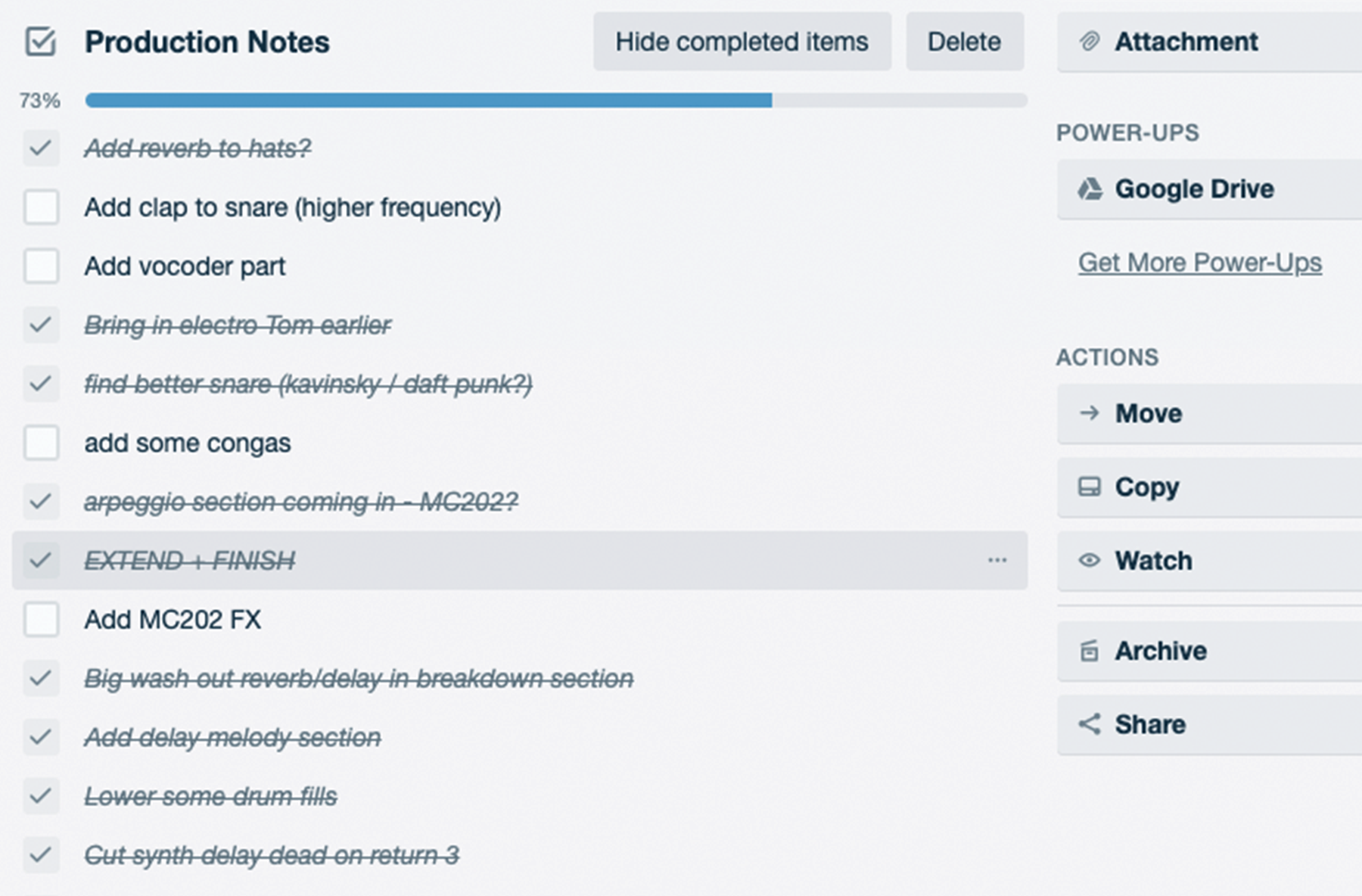
Ski Oakenfull’s Trello Board
Our head of curriculum, Ski Oakenfull, finds using a Trello board useful when planning out his releases. With Trello you’ll be able to group tracks, cross off completed goals and tasks, plan your future releases and get organised.
4. Use A Reference Track
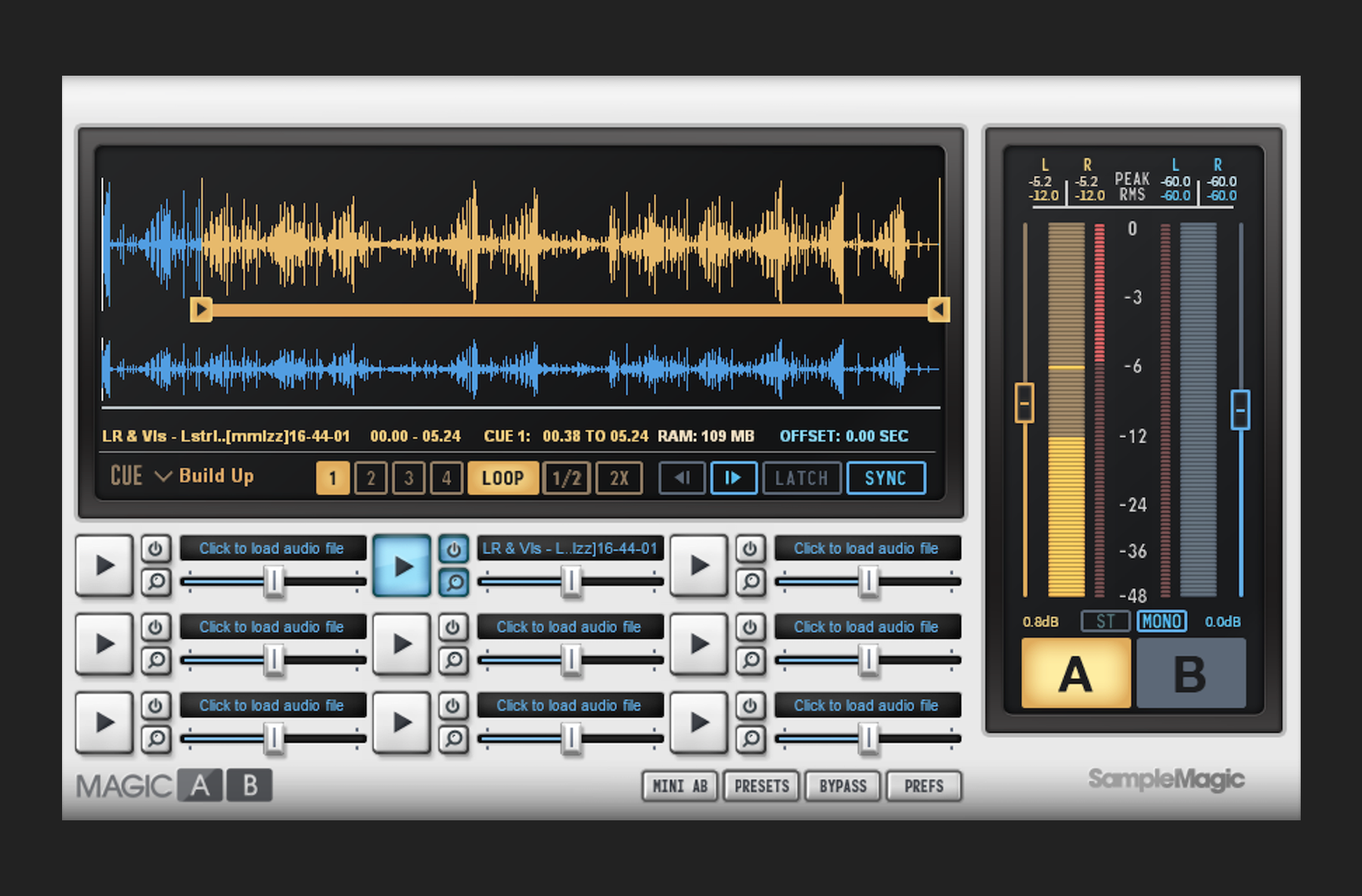
Although being experimental, challenging stereotypes and pushing the boundaries of what’s expected from a track can be rewarding, sometimes it’s best to play it safe. If you have an idea for what you’d like your track to sound like, try and stick to it. This will help keep the aim in focus and prevent you from veering off into uncharted territory and becoming confused. It can help to drag and drop your reference track into your DAW and build your song structure around it. This technique is also great for levelling and mastering your beat. A really helpful tool for comparing your track to that of a professionally mixed one is Magic A/B. This affordable plugin lets you compare the track you are working on in your DAW with any commercially produced reference track. Find out more here.
5. Test It Out

Do you find yourself trialling beats on friends and family and making excuses for what it will sound like when it’s finished? Good. Do that, make a note of the changes and do them. Sometimes testing your beats out in different places and on different systems can trigger different understandings for your track and result in constructive feedback. Bounce out your mix and test it out in your car, your headphones, a friends studio, your mum’s old hi-fi – anywhere. If it sounds good across the board then it’s a safe bet you’ve nailed the mix. Listening to the track from a different room is another great way to test out the balance of your mix as you’ll instantly hear if anything sounds off.
6. Get Experimental
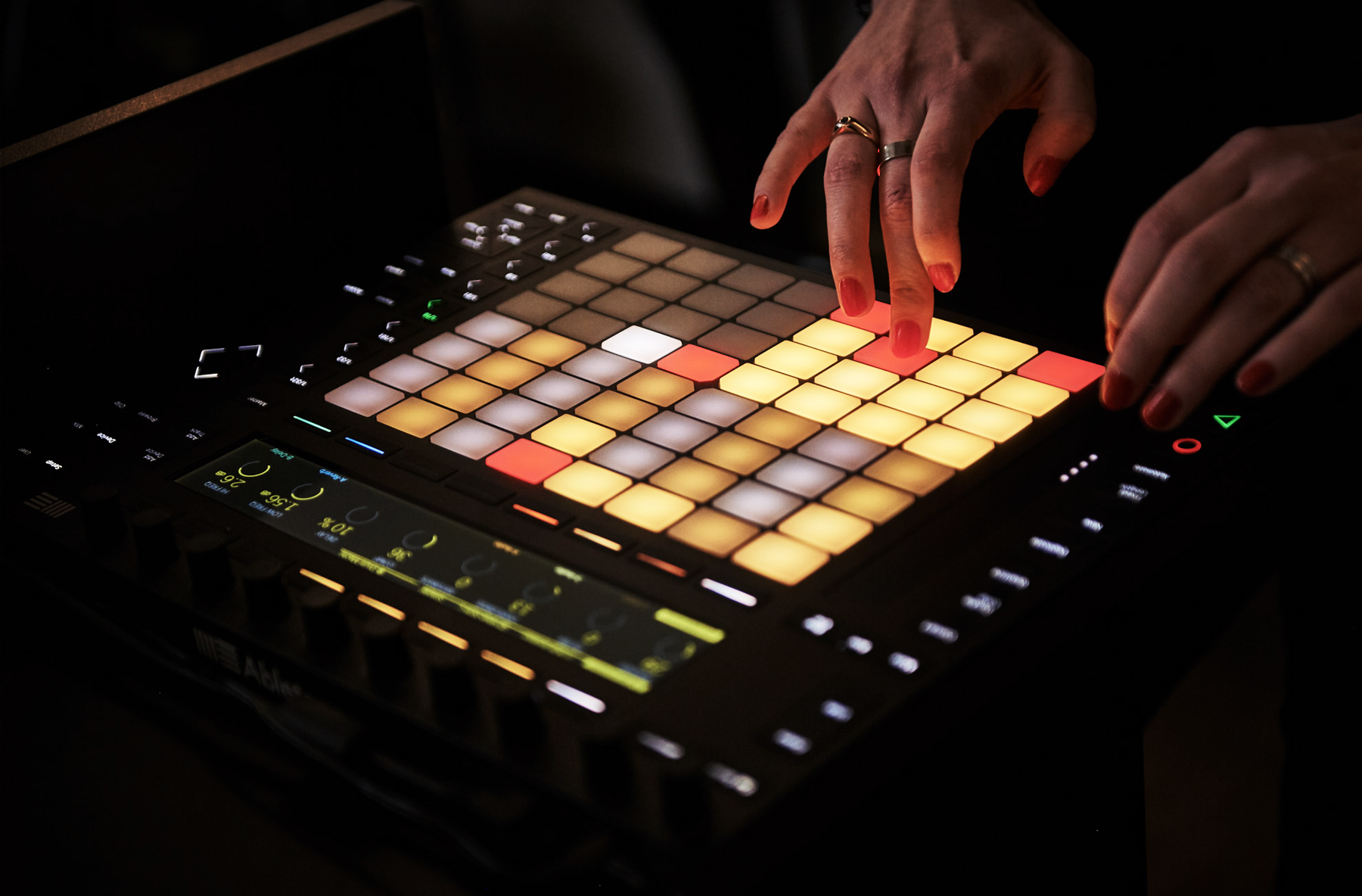
When the creative juices feel like they’re starting to dry up it’s usually a good time to get experimental. Process and mangle existing parts of your track to create new ones and inspire dynamic changes within your arrangement. Use the tools you have in your DAW to reverse, chop, warp and edit your sounds as it’s sure to inspire creativity. If you’d like to download some new tools to experiment with we have bundles for you to get stuck into. Check out our guide to 9 Must-Have Free Plugins, 9 More Must-Have Free Plugins and 9 Affordable Plugins That Will Take Your Tracks to the Next Level.
7. Take A Break

It may sound counterproductive, but sitting at your desk stewing over your loops on repeat won’t necessarily help you find inspiration – get out of there and find some. Listen to other music, play video games and listen to the effects, sounds and soundtracks. Watch a movie, there may be a sound you want to sample. You could even go out and record some new sounds on your phone or mic. Get out of the studio and roam around, hit the club or go to a party. Inspiration can be found everywhere and returning to your track with fresh ears can be incredibly beneficial.
Hopefully reading this has inspired you to head back to the studio and fire up those old project files. If you’d like a bit of extra help with your tracks why not enrol on a course? We have schools in London, Los Angeles, Ibiza and Mumbai all packed with state-of-the-art studio equipment. Or, alternatively, if you’d like to learn online you can do that too with our industry professional instructors.
Register to Access Free Courses, Plugins, Projects, Samples & More
When you register with pointblank, you access an array of free sounds, plugins, online course samples and much more! Simply register below and visit our Free Stuff page to get your hands on a range of exclusive music-making tools and tutorials provided by the team. Fill your boots!
